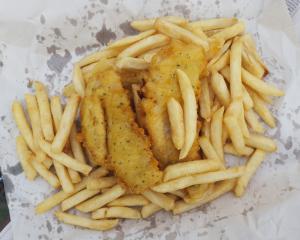But when we have finished with it, plastic stays around for a long time. It degrades, breaking down into particles. Microplastics are smaller than a sesame seed, and the more insidious nanoplastics are about 1000 times tinier. They have been detected everywhere from mountaintops to the deepest ocean trenches.
They are pretty much ubiquitous in the natural environment now and we are ingesting them, according to Associate Prof David Burritt, a biotechnologist from the Department of Botany at the University of Otago.
They get into the environment from the breakdown of plastic waste, including dust from the wear of tyres and shoe soles and fibres from synthetic fabrics.
They are found on the surface of the plants in some areas, and also in freshwater systems. Research shows that if you drink bottled water you will ingest some microplastics, and it is likely they will be found on plant foods such as fruit and vegetables, he says.
"There are studies that show you can wash larger microplastics off the surface but small ones can actually get down into the tissues of a plant so you can ingest them."
Microplastics may have been leaching into our food for a long time, although we did not know about it until recently. The real question is what impact they have on human beings. There has been very little work done in that area, Prof Burritt says.
"I believe there are quite a few studies done on them, but the problem is the sample sizes are very small often, and detecting [nanoplastics] is very difficult."
Until recently, tiny nanoplastics were almost impossible to detect but techniques such as Fourier transform infrared (FTIR) and Raman microspectroscopy now enable scientists to identify polymer particles down to a few micrometers.
"The real question is, are they present in large enough quantities to have any recurring problems?"
In theory the tiniest nanoplastics can actually cross into the human circulatory system and be transported through the body, even through the blood-brain barrier, he says.
Studies looking at human stools suggest they are in human food at pretty much every stage of the food production chain, Prof Burritt says.
"There are quite a few articles on nanoplastics and their potential dangers but they are very careful — they use the words ‘potential dangers’. At the moment there really haven’t been that many studies."
"While a number of studies have shown that microplastics are eaten by fish and get into their digestive systems, the gut, which can cause obstructions in some fish, obstructions are less likely to be an issue for humans."
But plastic also contains chemicals such as plasticisers which are added to make it softer and more flexible. Again a lot of work needs to be done to determine what their potential impacts are, he says.
"The surfaces of some plastics can be contaminated with other pollutants so it’s a very difficult area to actually research.
"If you soak plastic in a fluid like water for a period of time some of the plasticisers can leach out and the question then is what effect is actually caused by the microplastics themselves and what effect is caused by the plasticiser."
After years of concern, plastic films are being specially designed for food products so the odds of plasticisers leaching into food are now relatively low, Prof Burritt says.
However, most of our plastics are petroleum-based at present, which is not sustainable, but we are moving towards biodegradable films.
"Asia, particularly China and India, are some of the major polluters although both are working quite hard to reduce waste and pollution because they see it as in their best interests to do so. But you also cannot forget the US and you cannot forget Russia. The US, I suspect, is still the major polluter globally. There’s a lot of talk there and a lot of states are doing a really great job, like California, but there are states that aren’t."
So what can ordinary people like us do to help?
"Basically wherever possible if you can buy an alternative to a petroleum-based plastic, do so. You have to be a bit careful, but there is some quite good labelling now when things are sustainably produced. Be a responsible consumer," he says.
"The power is actually with the consumer. It sounds a bit cliched but the power is with the people. Companies will stop manufacturing something if people don’t buy it. That’s the way I always think of this."
But consumers must also make educated decisions — a lot of the misinformation out there is a bit of a problem. We cannot just ban plastics overnight. There are not viable alternatives in many cases, he says.
Some alternatives such as glass use a lot of energy, much of it from fossil fuels, both in their production and recycling.
"We need to be reducing the plastic we put into the environment full stop for various reasons, but whether microplastics are going to be an issue for the human food chain depends on the levels they increase to in the future and what we find out in the research that is being done, he says.
"I can’t emphasise enough the importance of doing research that generates facts."










